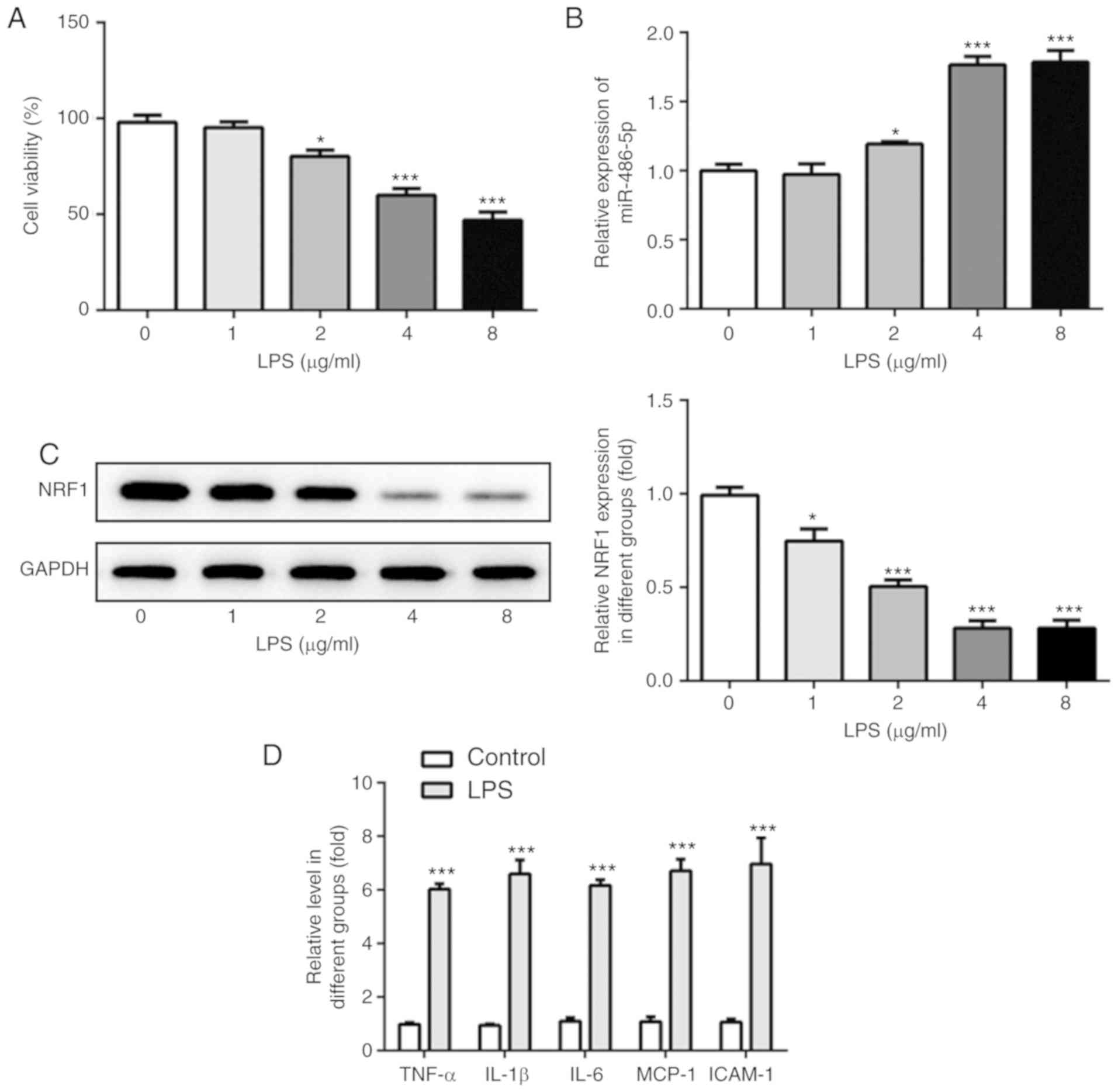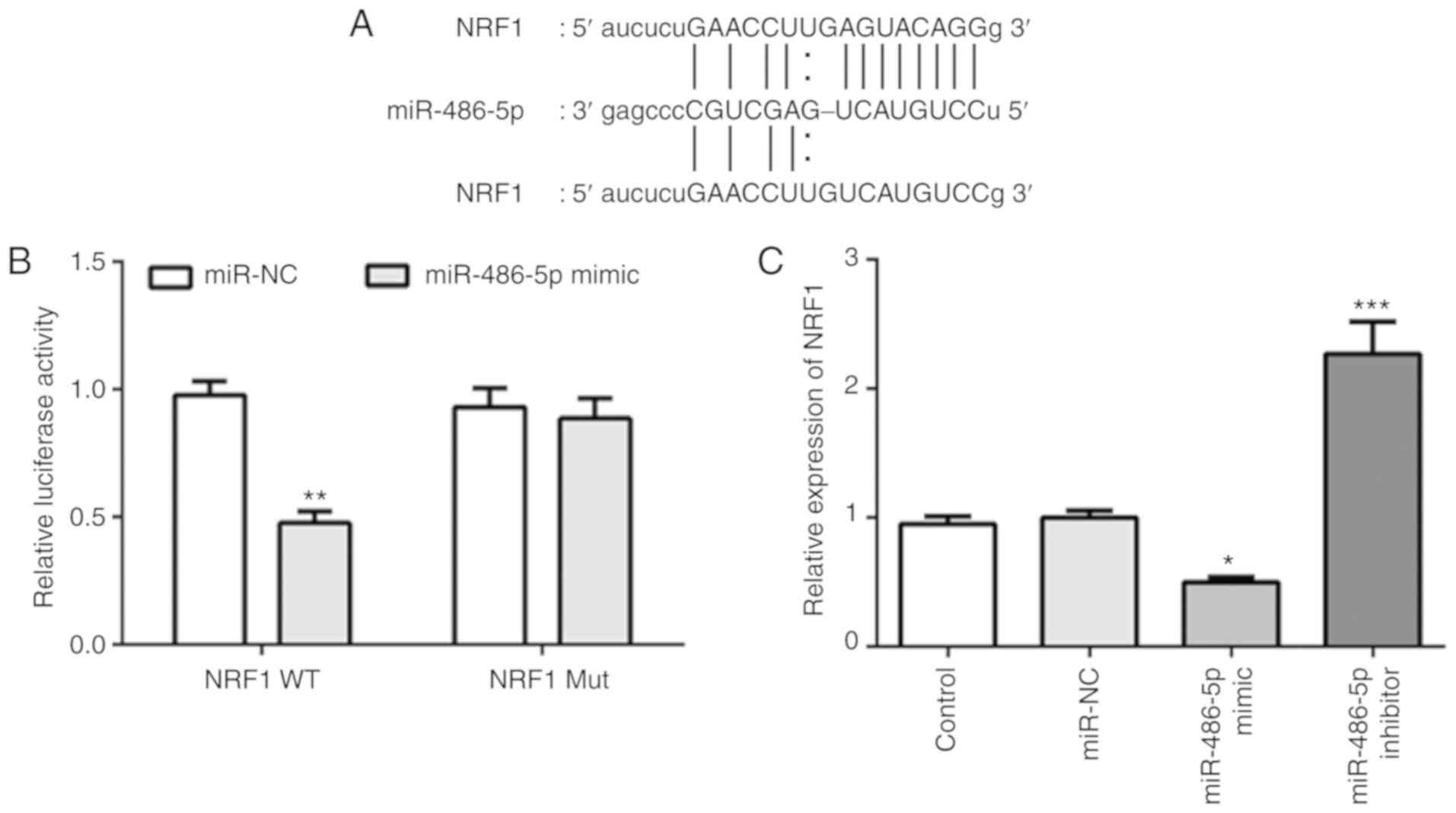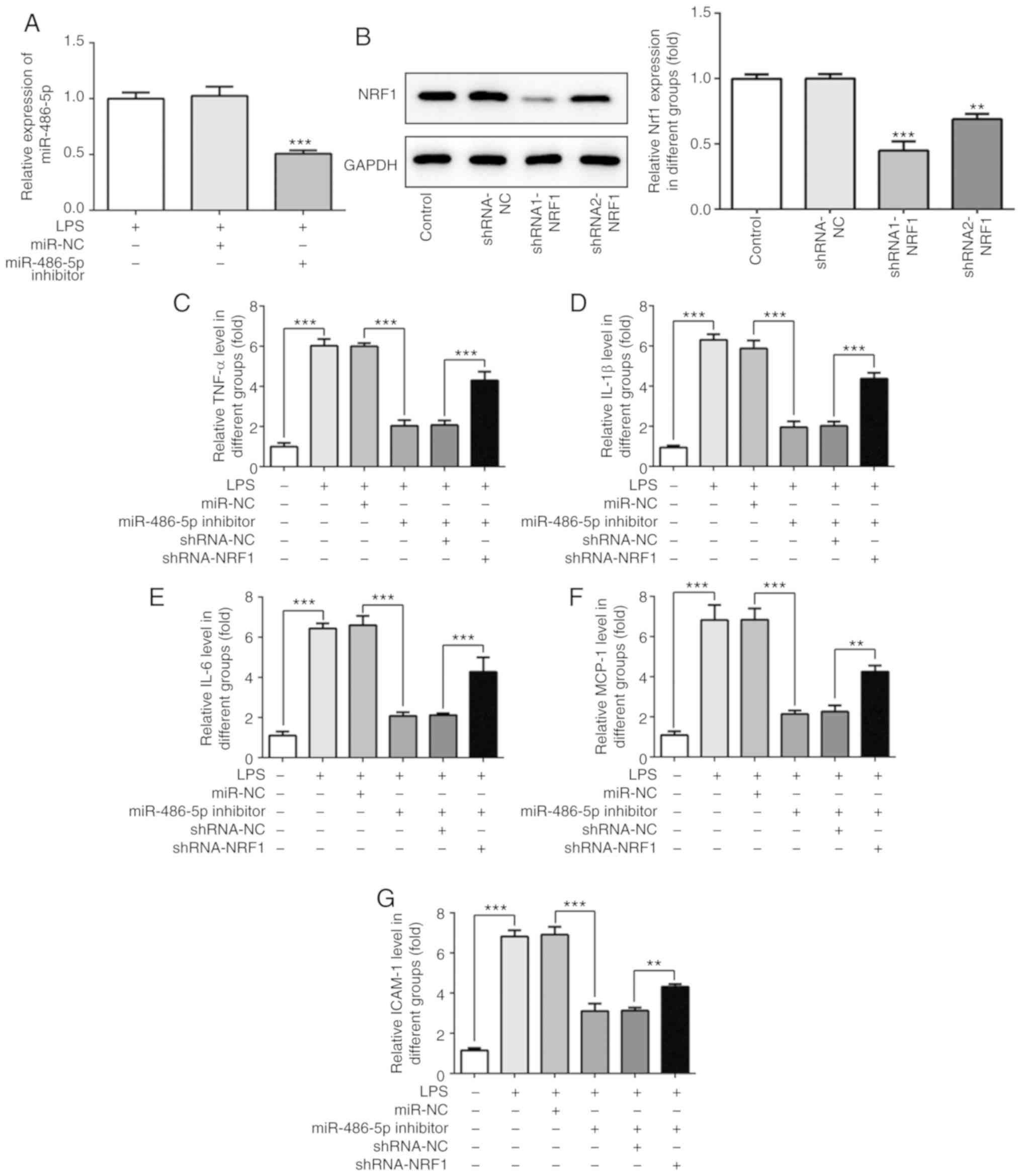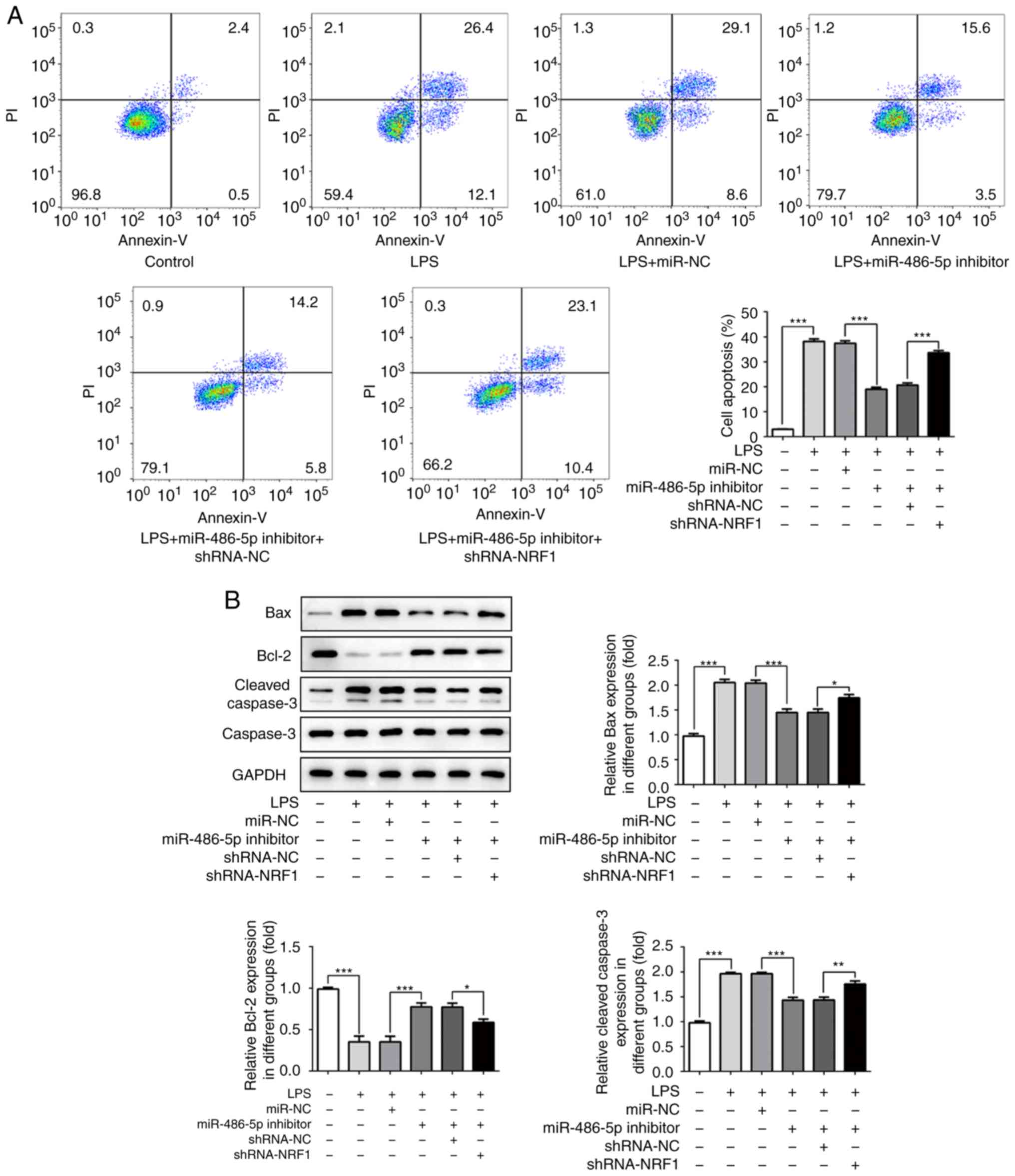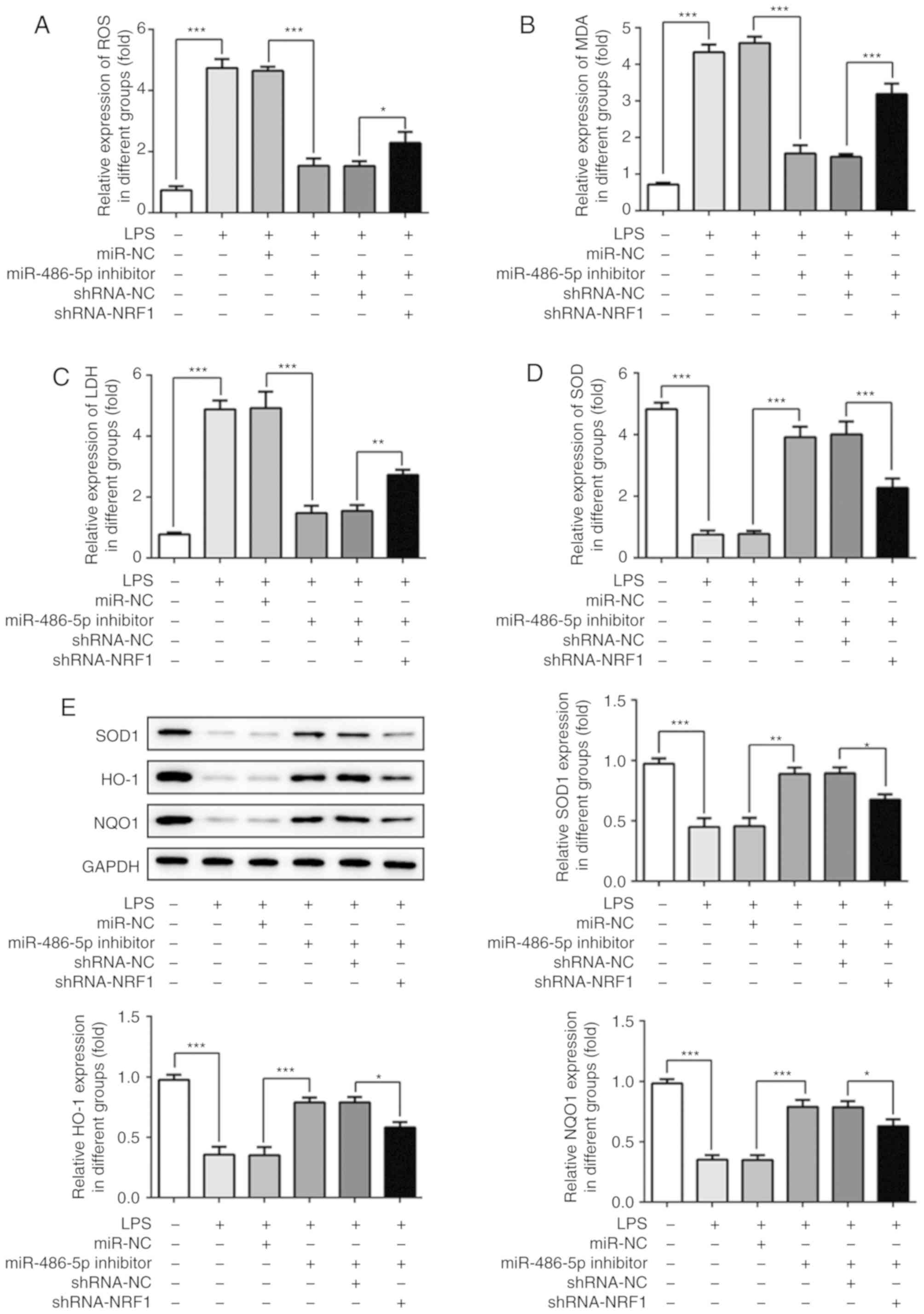|
1
|
Dieppe PA and Lohmander LS: Pathogenesis
and management of pain in osteoarthritis. Lancet. 365:965–973.
2005. View Article : Google Scholar : PubMed/NCBI
|
|
2
|
Zhou Y, Ming J, Li Y, Du X, Deng M, He B,
Zhou J, Wang G and Liu S: Surfactant protein D attenuates nitric
oxide-stimulated apoptosis in rat chondrocyte by suppressing p38
MAPK signaling. Biochem Biophys Res Commun. 495:526–532. 2018.
View Article : Google Scholar : PubMed/NCBI
|
|
3
|
Sacitharan PK: Ageing and Osteoarthritis.
Subcell Biochem. 91:123–159. 2019. View Article : Google Scholar : PubMed/NCBI
|
|
4
|
Jones G: Whats new in osteoarthritis
pathogenesis? Intern Med J. 46:229–236. 2016. View Article : Google Scholar : PubMed/NCBI
|
|
5
|
Yucesoy B, Charles LE, Baker B and
Burchfiel CM: Occupational and genetic risk factors for
osteoarthritis: A review. Work. 50:261–273. 2015. View Article : Google Scholar : PubMed/NCBI
|
|
6
|
Jin H, Zhang H, Ma T, Lan H, Feng S, Zhu H
and Ji Y: Resveratrol protects murine chondrogenic ATDC5 cells
against LPS-induced inflammatory injury through up-regulating
miR-146b. Cell Physiol Biochem. 47:972–980. 2018. View Article : Google Scholar : PubMed/NCBI
|
|
7
|
Bugno M, Daniel M, Chepelev NL and
Willmore WG: Changing gears in Nrf1 research, from mechanisms of
regulation to its role in disease and prevention. Biochim Biophys
Acta. 1849:1260–1276. 2015. View Article : Google Scholar : PubMed/NCBI
|
|
8
|
Kim J, Xing W, Wergedal J, Chan JY and
Mohan S: Targeted disruption of nuclear factor erythroid-derived
2-like 1 in osteoblasts reduces bone size and bone formation in
mice. Physiol Genomics. 40:100–110. 2010. View Article : Google Scholar : PubMed/NCBI
|
|
9
|
Li G, Han N, Li Z and Lu Q: Identification
of transcription regulatory relationships in rheumatoid arthritis
and osteoarthritis. Clin Rheumatol. 32:609–615. 2013. View Article : Google Scholar : PubMed/NCBI
|
|
10
|
Park SY, Kim SH, Yoon HK, Yim CH and Lim
SK: The role of nuclear factor-E2-related factor 1 in the oxidative
stress response in MC3T3-E1 osteoblastic cells. Endocrinol Metab
(Seoul). 31:336–342. 2016. View Article : Google Scholar : PubMed/NCBI
|
|
11
|
Nugent M: MicroRNAs: Exploring new
horizons in osteoarthritis. Osteoarthritis Cartilage. 24:573–580.
2016. View Article : Google Scholar : PubMed/NCBI
|
|
12
|
Kong R, Gao J, Si Y and Zhao D:
Combination of circulating miR-19b-3p, miR-122-5p and miR-486-5p
expressions correlates with risk and disease severity of knee
osteoarthritis. Am J Transl Res. 9:2852–2864. 2017.PubMed/NCBI
|
|
13
|
Shi J, Guo K, Su S, Li J and Li C:
miR-486-5p is upregulated in osteoarthritis and inhibits
chondrocyte proliferation and migration by suppressing SMAD2. Mol
Med Rep. 18:502–508. 2018.PubMed/NCBI
|
|
14
|
Livak KJST and Schmittgen TD: Analysis of
relative gene expression data using real-time quantitative PCR and
the 2(-Delta Delta C(T)) Method. Methods. 25:402–408. 2001.
View Article : Google Scholar : PubMed/NCBI
|
|
15
|
Mongkhon JM, Thach M, Shi Q, Fernandes JC,
Fahmi H and Benderdour M: Sorbitol-modified hyaluronic acid reduces
oxidative stress, apoptosis and mediators of inflammation and
catabolism in human osteoarthritic chondrocytes. Inflamm Res.
63:691–701. 2014. View Article : Google Scholar : PubMed/NCBI
|
|
16
|
Murata K, Kanemura N, Kokubun T, Fujino T,
Morishita Y, Onitsuka K, Fujiwara S, Nakajima A, Shimizu D and
Takayanagi K: Controlling joint instability delays the degeneration
of articular cartilage in a rat model. Osteoarthritis Cartilage.
25:297–308. 2017. View Article : Google Scholar : PubMed/NCBI
|
|
17
|
Saklatvala J: Inflammatory signaling in
cartilage: MAPK and NF-kappaB pathways in chondrocytes and the use
of inhibitors for research into pathogenesis and therapy of
osteoarthritis. Curr Drug Targets. 8:305–313. 2007. View Article : Google Scholar : PubMed/NCBI
|
|
18
|
Pan L, Liu D, Zhao L, Wang L, Xin M and Li
X: Long noncoding RNA MALAT1 alleviates lipopolysaccharide-induced
inflammatory injury by upregulating microRNA-19b in murine
chondrogenic ATDC5 cells. J Cell Biochem. 119:10165–10175. 2018.
View Article : Google Scholar : PubMed/NCBI
|
|
19
|
Wu DP, Zhang JL, Wang JY, Cui MX, Jia JL,
Liu XH and Liang QD: MiR-1246 promotes LPS-induced inflammatory
injury in chondrogenic cells ATDC5 by targeting HNF4γ. Cell Physiol
Biochem. 43:2010–2021. 2017. View Article : Google Scholar : PubMed/NCBI
|
|
20
|
Scotece M, Conde J, Abella V, López V,
Francisco V, Ruiz C, Campos V, Lago F, Gomez R, Pino J, et al:
Oleocanthal inhibits catabolic and inflammatory mediators in
LPS-activated human primary osteoarthritis (OA) chondrocytes
through MAPKs/NF-κB pathways. Cell Physiol Biochem. 49:2414–2426.
2018. View Article : Google Scholar : PubMed/NCBI
|
|
21
|
Wang Y and Kong D: MicroRNA-136 promotes
lipopolysaccharide-induced ATDC5 cell injury and inflammatory
cytokine expression by targeting myeloid cell leukemia 1. J Cell
Biochem. 119:9316–9326. 2018. View Article : Google Scholar : PubMed/NCBI
|
|
22
|
Hubbard AK and Rothlein R: Intercellular
adhesion molecule-1 (ICAM-1) expression and cell signaling
cascades. Free Radic Biol Med. 28:1379–1386. 2000. View Article : Google Scholar : PubMed/NCBI
|
|
23
|
Dadgar Pakdel F, Keramatipour M,
Noorbakhsh F, Talebi S and Vodjgani M: Investigating the effect of
rs3783605 single-nucleotide polymorphism on the activity of VCAM-1
promoter in human umbilical vein endohelial cells. Iran J Allergy
Asthma Immunol. 14:179–187. 2015.PubMed/NCBI
|
|
24
|
Yu GI, Jun SE and Shin DH: Associations of
VCAM-1 gene polymorphisms with obesity and inflammation markers.
Inflamm Res. 66:217–225. 2017. View Article : Google Scholar : PubMed/NCBI
|
|
25
|
Liang Z and Ren C: Emodin attenuates
apoptosis and inflammation induced by LPS through up-regulating
lncRNA TUG1 in murine chondrogenic ATDC5 cells. Biomed
Pharmacother. 103:897–902. 2018. View Article : Google Scholar : PubMed/NCBI
|
|
26
|
Pan T, Shi X, Chen H, Chen R, Wu D, Lin Z,
Zhang J and Pan J: Geniposide suppresses interleukin-1β-induced
inflammation and apoptosis in rat chondrocytes via the
PI3K/Akt/NF-κB signaling pathway. Inflammation. 41:390–399. 2018.
View Article : Google Scholar : PubMed/NCBI
|
|
27
|
Lu DY, Chen JH, Tan TW, Huang CY, Yeh WL
and Hsu HC: Resistin protects against 6-hydroxydopamine-induced
cell death in dopaminergic-like MES23.5 cells. J Cell Physiol.
228:563–571. 2013. View Article : Google Scholar : PubMed/NCBI
|
|
28
|
Xiong J, Wang K, Yuan C, Xing R, Ni J, Hu
G, Chen F and Wang X: Luteolin protects mice from severe acute
pancreatitis by exerting HO-1-mediated anti-inflammatory and
antioxidant effects. Int J Mol Med. 39:113–125. 2017. View Article : Google Scholar : PubMed/NCBI
|
|
29
|
Zeng T, Zhang CL, Song FY, Zhao XL, Yu LH,
Zhu ZP and Xie KQ: The activation of HO-1/Nrf-2 contributes to the
protective effects of diallyl disulfide (DADS) against
ethanol-induced oxidative stress. Biochim Biophys Acta.
1830:4848–4859. 2013. View Article : Google Scholar : PubMed/NCBI
|
|
30
|
Luo D, Guo Y, Cheng Y, Zhao J, Wang Y and
Rong J: Natural product celastrol suppressed macrophage M1
polarization against inflammation in diet-induced obese mice via
regulating Nrf2/HO-1, MAP kinase and NF-κB pathways. Aging (Albany
NY). 9:2069–2082. 2017. View Article : Google Scholar : PubMed/NCBI
|
|
31
|
Sun J, Wei X, Lu Y, Cui M, Li F, Lu J, Liu
Y and Zhang X: Glutaredoxin 1 (GRX1) inhibits oxidative stress and
apoptosis of chondrocytes by regulating CREB/HO-1 in
osteoarthritis. Mol Immunol. 90:211–218. 2017. View Article : Google Scholar : PubMed/NCBI
|
|
32
|
Lepetsos P and Papavassiliou AG:
ROS/oxidative stress signaling in osteoarthritis. Biochim Biophys
Acta. 1862:576–591. 2016. View Article : Google Scholar : PubMed/NCBI
|
|
33
|
Zhang Y, Unnikrishnan A, Deepa SS, Liu Y,
Li Y, Ikeno Y, Sosnowska D, Van Remmen H and Richardson A: A new
role for oxidative stress in aging: The accelerated aging phenotype
in Sod1-/- mice is correlated to increased cellular senescence.
Redox Biol. 11:30–37. 2017. View Article : Google Scholar : PubMed/NCBI
|
|
34
|
Lv D, Zhou Q, Xia Y, You X, Zhao Z, Li Y
and Zou H: The association between oxidative stress alleviation via
sulforaphane-induced Nrf2-HO-1/NQO-1 signaling pathway activation
and chronic renal allograft dysfunction improvement. Kidney Blood
Press Res. 43:191–205. 2018. View Article : Google Scholar : PubMed/NCBI
|
|
35
|
Samarghandian S, Azimi-Nezhad M,
Farkhondeh T and Samini F: Anti-oxidative effects of curcumin on
immobilization-induced oxidative stress in rat brain, liver and
kidney. Biomed Pharmacother. 87:223–229. 2017. View Article : Google Scholar : PubMed/NCBI
|
|
36
|
Ohtsuji M, Katsuoka F, Kobayashi A,
Aburatani H, Hayes JD and Yamamoto M: Nrf1 and Nrf2 play distinct
roles in activation of antioxidant response element-dependent
genes. J Biol Chem. 283:33554–33562. 2008. View Article : Google Scholar : PubMed/NCBI
|
|
37
|
Biswas M and Chan JY: Role of Nrf1 in
antioxidant response element-mediated gene expression and beyond.
Toxicol Appl Pharmacol. 244:16–20. 2010. View Article : Google Scholar : PubMed/NCBI
|
|
38
|
Kim HM, Han JW and Chan JY: Nuclear factor
erythroid-2 Like 1 (NFE2L1): Structure, function and regulation.
Gene. 584:17–25. 2016. View Article : Google Scholar : PubMed/NCBI
|















